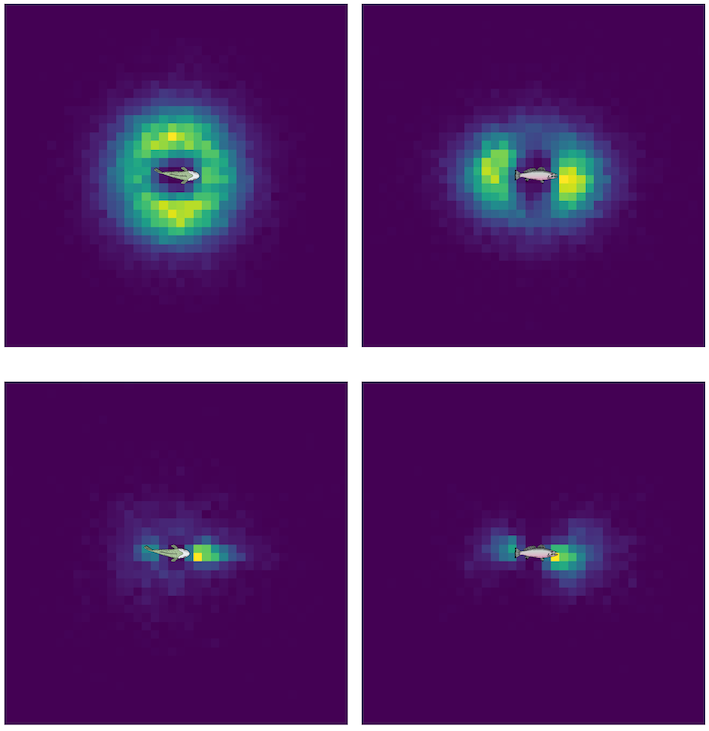Collective Behaviour of Zebrafish
Recent years have seen the emergence of a new understanding of collective behavior in biological systems, and its connection/mapping with more familiar systems described by statistical mechanics. The field has been dominated by two systems - flocking birds (in particular Starlings) and swarming midges. So-called agent-based models hold promise for reproducing collective behavior in these systems, where the interactions are profoundly different. Birds interact topologically - with a fixed group of neighbors, while midges seem to interact over a certain distance regardless of the number of neighbours. The mapping of statistical mechanical concepts to these systems has yielding intriguing results, such as a (non-equilibrium) chemical potential for midges.

Spatial distribution of the nearest negibour of the zebrafish. Top: in a group of 50 fish. Bottom: in the case of 2 fish. Left: XY plane. Right: XZ plane.
However, nature is not limited to two systems, of course. Fish exhibit an entirely different scenario. For example, hydrodynamic coupling between individuals may have a profound effect upon the dynamics, yet remains almost completely unexplored in a biological system . We use zebrafish as a lab-based model system, and have carried out what we believe to be the first 3d tracking studies, which reveal structural and dynamical information, comparable to that obtained in colloids.
-
Yang Y, Turci F, Kague E, Hammond CL, Russo J and Royall CP, "Dominating Lengthscales of Zebrafish Collective Behaviour", PLOS Comp. Biol. 18 e1009394 (2022) link to PDF